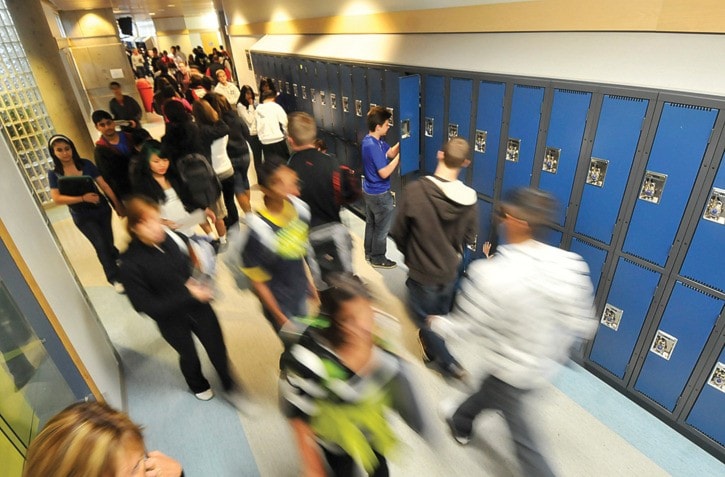The Surrey School District needs $250 million. Now.That would provide two new high schools, says District Supt. Mike McKay, and four or five new elementary schools.It would also help reduce the sea of portables sitting at schools such as Hazelgrove and Cambridge elementaries and relieve pressure at some local high schools where simply navigating crowded hallways between classes can be difficult.Instead however, thousands of Surrey’s elementary school kids will continue to learn in portable classrooms and every high school is looking at extending days or expanding online options in order to accommodate more teens.In an editorial board meeting with The Leader and Peace Arch News Wednesday, McKay, as well as Surrey Board of Education chair Laurae McNally and vice-chair Shawn Wilson, shared the ongoing financial strains and complexities faced by the ever-growing district.Surrey ushered in more than 800 new students last fall and is expecting another 1,167 or so to arrive this September. The city is different than any other in B.C., most areas of which have declining enrolment and are looking to close schools because there aren’t enough students to fill them.“The case the board has made relentlessly ... is we need a made-in-Surrey solution,” said McKay“We do not fit the mould,” added McNally.The opening of Adams Road Elementary in Cloverdale this year represented the last of the capital money the province approved for the Surrey School District. That was back in 2005.Apart from funding for seismic improvements and dollars targeting full-day kindergarten space, no building money has been sent Surrey’s way for six years.Even if the $250-million cheque the district fantasizes about was delivered today, it would be 2013 or 2014 before a new school would open here.In the interim, the district is trying to come up with temporary fixes that still serve students and parents well.“If you don’t have control of the purse strings and your enrolment continues to grow, what do you do?” asked McNally.Time and space, the district decided, are the only variables left to consider.Two secondary schools – Lord Tweedsmuir and Earl Marriott – have already decided to adopt a version of a flexible schedule this fall that would see the school day extended to five blocks from four, with students perhaps starting earlier or staying later than they do now.And every other high school in the district is also being asked to assess its needs and explore alternate scheduling options. Some may not need to vary things too much, while other schools may choose to make more significant changes by September.“It will look different in every secondary school,” said McNally.During public consultation sessions held last fall, the district heard consistently that residents wanted to ensure their kids can get into their neighbourhood schools, that they can get the courses they want, that choice programs like French immersion have stability and won’t be moved from location to location, and that portables are temporary solutions only.The hope is that making scheduling more flexible and/or thinking outside the conventional school day might achieve those desired goal – at least temporarily.Apart from capital funding woes – money that pays for school buildings and other physical space – the district is also facing a $10-million operating budget shortfall. Operating money pays for things such as salaries, programs, supplies, utilities and services that generally keep schools functioning.In general, the provincial funding formula supports districts with declining enrolment, says McKay, and needs to be fixed to recognize areas like Surrey where student numbers are continually rising.In addition, continual inequities in Community Link Funding – a grant that pays for things such as meals for low-income students, initiatives at inner-city schools and community schools partnerships that run after-school programs – leave Surrey with million of dollars less than other, smaller school districts.For example, while Vancouver receives about $8.7 million annually through Community Link, Surrey gets about $3.7 million. Victoria, with one-third the number of students as Surrey, receives about the same amount as this district.This year, it’s estimated about $400,000 will have to be taken from Surrey’s general operating budget to supplement the school meal programs.That’s enough money to pay five teachers or several special education assistants, McKay notes, but how do you choose between hiring instructors and feeding hungry children?“Everyone acknowledges it makes no sense, but no one does anything to correct it,” says McNally of the skewed Community Link funding.The many portables currently in use here also take a considerable bite out of the school district’s limited operational funds. There are about 230 of the so-called temporary classrooms on local school grounds which cost approximately $120,000 apiece to purchase and install.The provincial government has repeatedly acknowledged it is aware or Surrey’s distinct needs, but has yet to commit to any new funding.sreynolds@surreyleader.com
